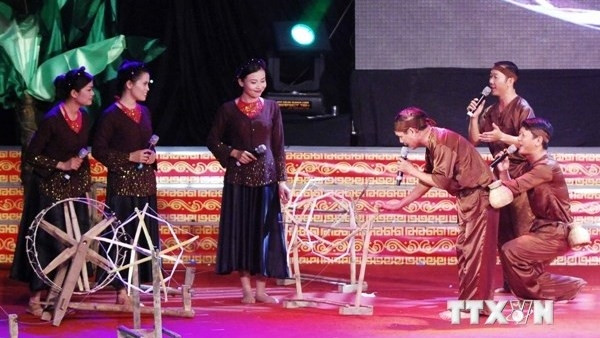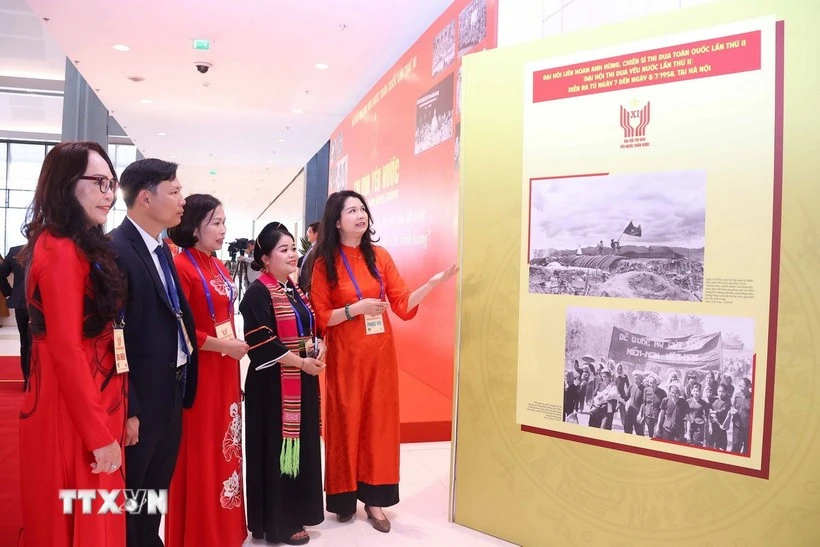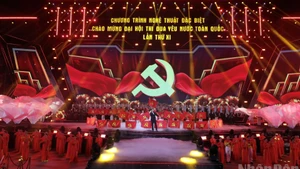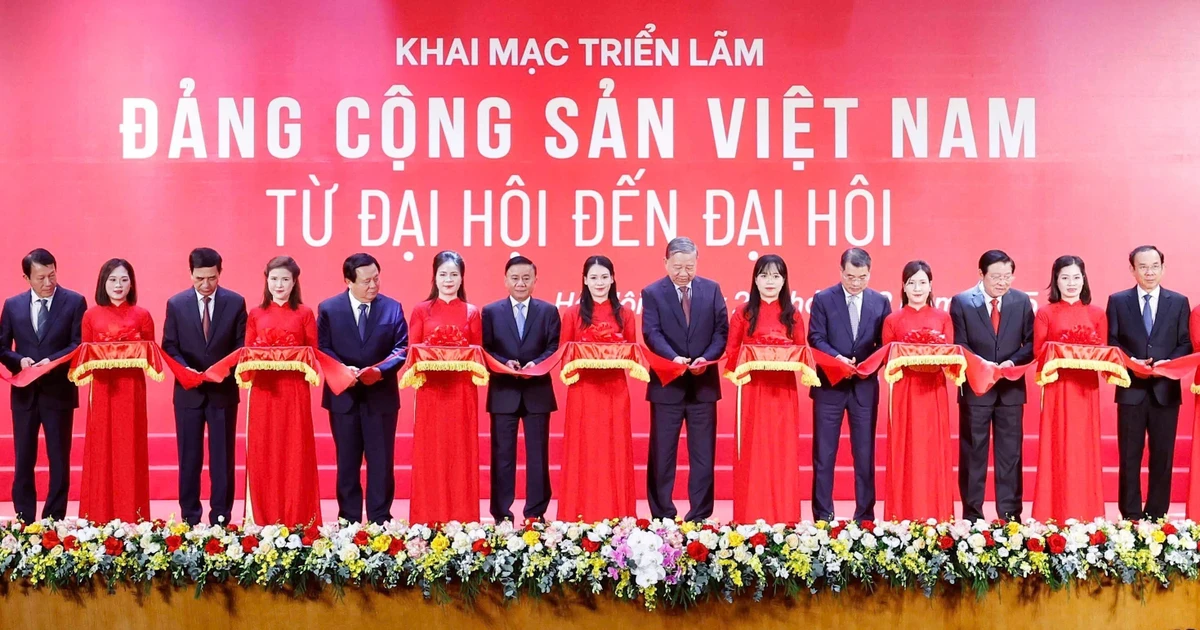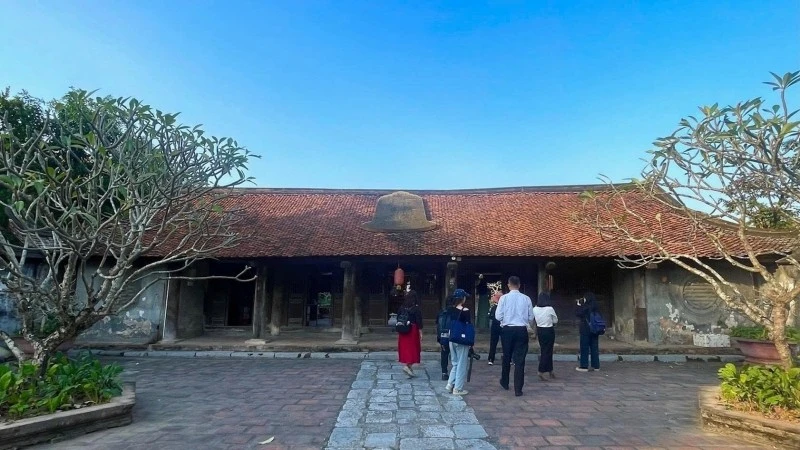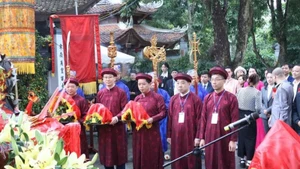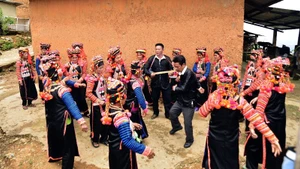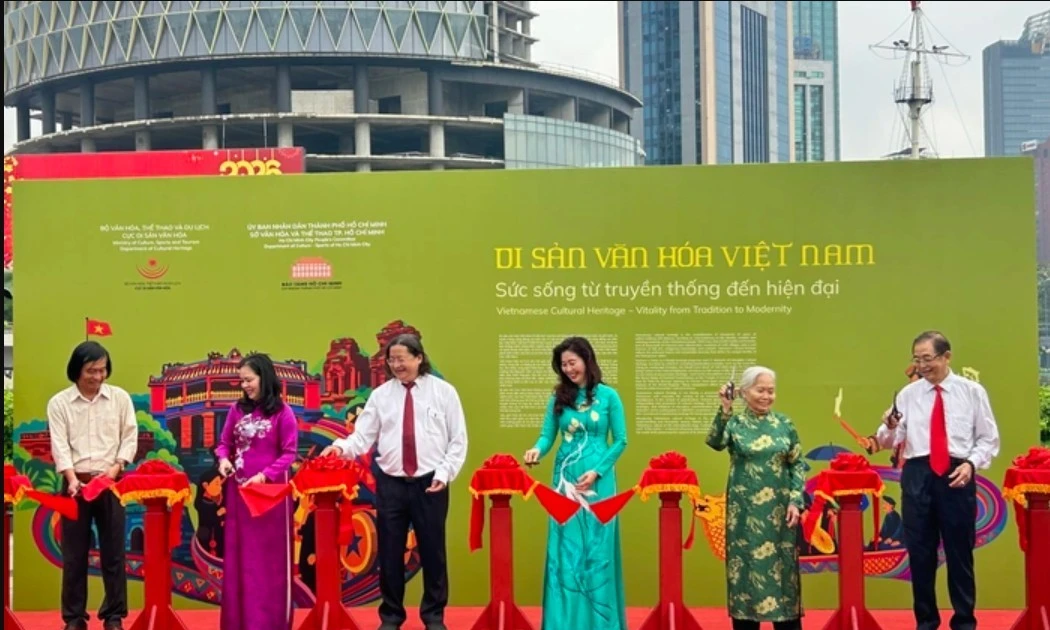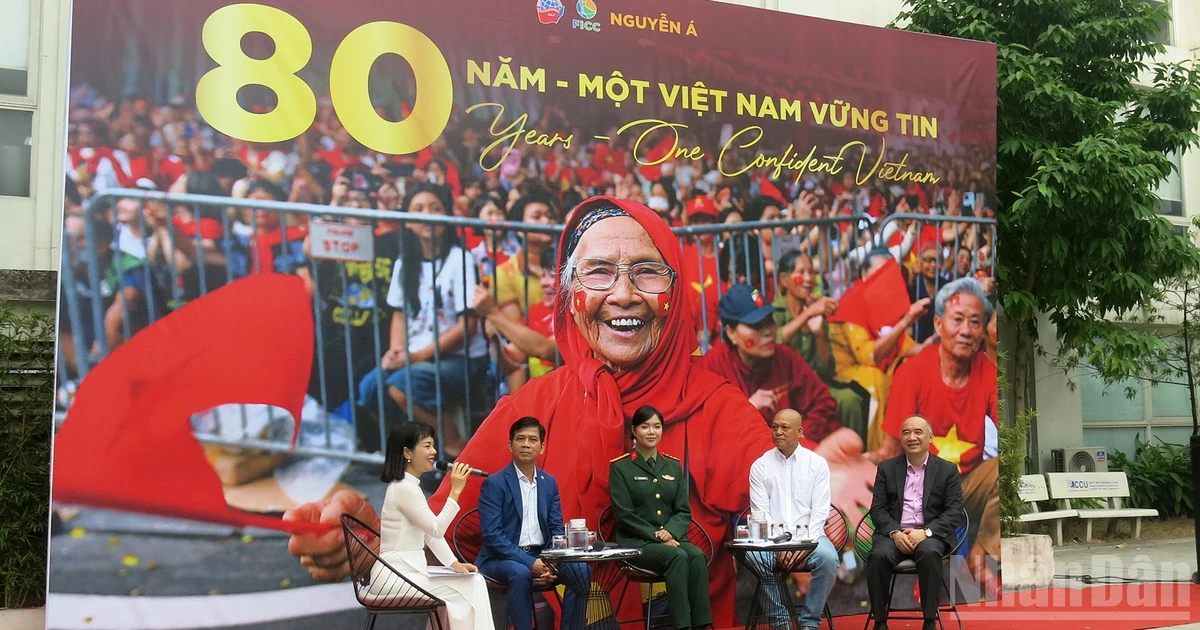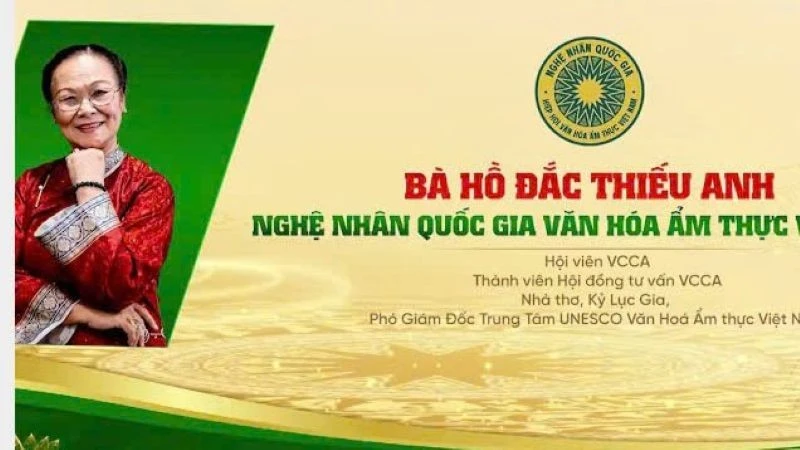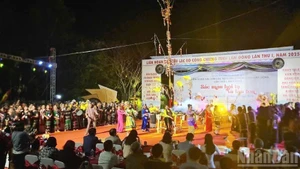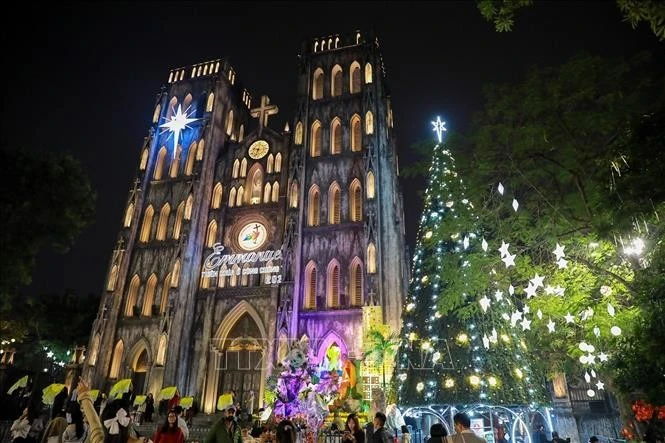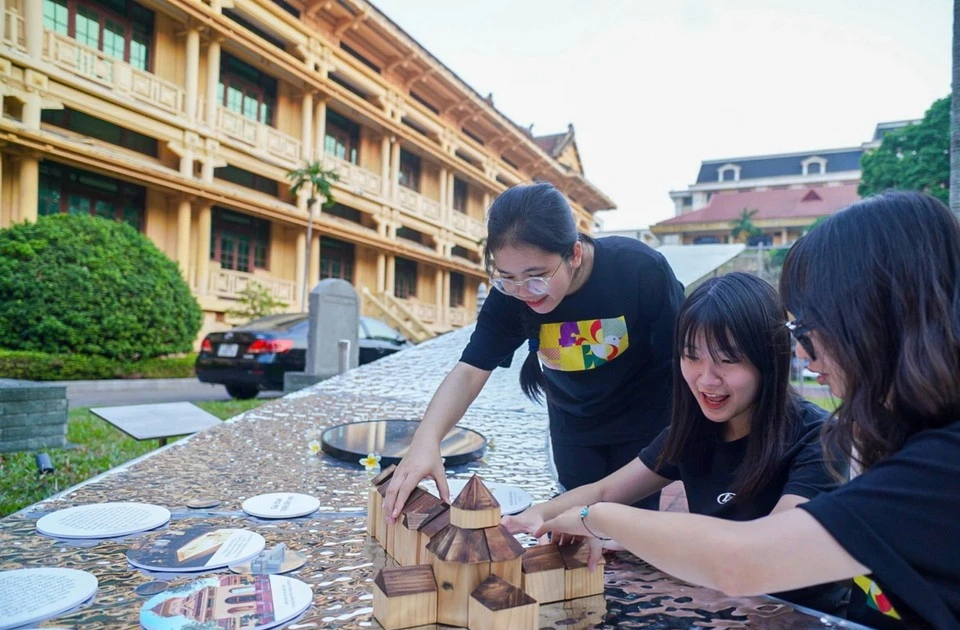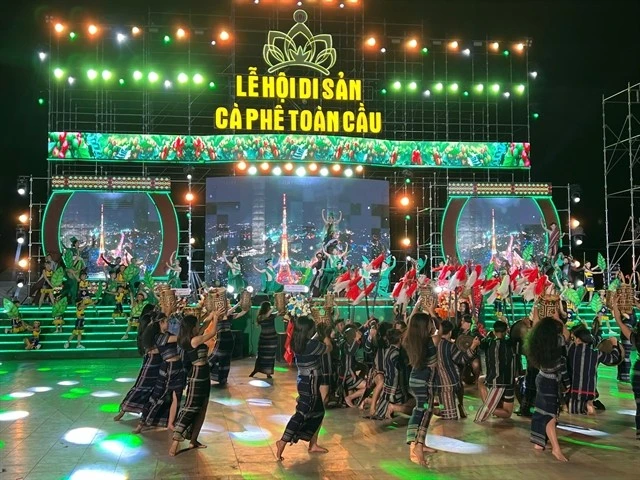>> Vi-Giam folk singing recognised as UNESCO intangible heritage
Vi-Giam singing: Melodies arouse from daily life work
Although different opinions have been raised about the origin of Vi-Giam by cultural researchers, they agreed that Vi-Giam have been passed down from generation to generation among communities in the two localities, and singing them occupies an important place in their cultural and spiritual life.
According to the researchers, ‘Vi’ singing comes from the word “vi von” (comparison) since the comparison was often used in the lyrics of many Vi songs. Others said that “Vi” is another pronunciation of “voi” (repartee) in which female and male vocalists singing in a call and response pattern.
Meanwhile, in ‘Giam’ singing, the performers recite short fables in verse in a rhythmic manner.
The lyrics use the specific dialect and linguistic idioms of the central region, making them easy to remember and to sing. The songs focus on social and historical issues, philosophy about life and virtues, as well as the love for life, patriotism and love between men and women.
Unlike other folk singing normally attached to a spefic perfoming space, Vi - Giam are sung without instrumental accompaniment, anytime and anywhere, while people cultivate rice in the fields, row boats on lakes, go to the forest or lull children to sleep.
It is estimated that there are 15 tunes of Vi and 8 airs of Giam, which were named based on the context or the places when the songs were sung.
These types of folk singing have been practiced in nearly 260 villages in the central provinces of Nghe An and Ha Tinh, where 51 Vi Giam singing clubs with over 800 vocalists have been established to preserve and promote the art forms.
Today Vi and Giam are commonly performed at cultural events, festivals, community spaces. They are also adapted to songs or operas and brought to theatre stages.
Compliments from cultural managers and reseachers
According to Professor-Doctor Nguyen Chi Ben, meber of the National Cultural Heritage Council, studies and research on Vi-Giam singing have been carried out since before the August Revolution (1945) by researchers Nguyen Dong Chi and Nguyen Tat Thu.
Earlier, Vi-Giam singing were acknowledged as national intangible cultural heritage by the Ministry of Culture, Sports and Tourism in 2012.
Vietnam’s Ministry of Culture, Sports and Tourism started compiling a dossier on Vi-Giam singing to seek UNESCO’s acknowledgement in mid 2012, comprising photos, videos and scientific reports. The dossier was submmited to UNESCO in March 2013.
UNESCO made its official announcement honouring the singing as an intangible cultural heritage of humanity during the 9th session of its Inter-governmental Committee for the Safeguarding of the Intangible Cultural Heritage in Paris on November 27.
Deputy Minister of Culture, Sports and Tourism Dang Thi Bich Lien said the UNESCO’s recognition of Vi-Giam is of great significance to Vietnam since the folk genres represent cultural identities of Vietnamese locals in Nghe An and Ha Tinh provinces.
Vi-Giam singing helps increase sharing and exchanges among the community, thus consolidating the community’s members.
She reaffirmed Vietnam’s commitment to realising an action programme to preserve Vi-Giam singing, carrying out policies to honour artisans, and educate young generations on the treasured type of art.
Associate Professor and Doctor Dang Hoanh Loan, former Deputy head of the Vietnam Institute of Musicology said that Vi-Giam singing have been kept intact and transferred through generations by indigenous people. The genre succeeds in maintaining its vitality in today’s life as it is practiced everyday, in families, at work or at ease, which prevents it from being lost like other aged-old art form.
Due to its strong attachment to the people’s lives, Vi-Giam lyrics are also records of the Vietnamese people’s past, from their uprising, national resistance wars and their cause of building peace, Loan said.
For its treasured values, a series of safeguarding measures have been taken, including raising awareness, education and promotion with the financial support of the State and local authorities, aiming to ensure the viability of the practice, indicating the will and commitment both of the authorities and of the communities to safeguard it.
A workshop was held in central Nghe An province in May, gathering UNESCO experts as well as domestic and foreign scholars. More than 80 reports delivered at the event evaluate the true values of the thousand-year-old folk music and seek ways to preserve and promote folk values of Vi-Giam singing in contemporary society.
Two Vi-Giam Folk Singing Festivals have been organised to provide an opportunity for Vi-Giam clubs to exchange with each other while promoting the genre to the public.
